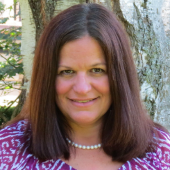The Washington Department of Ecology has recently taken bold new steps to regulate toxic chemicals in products. The action comes as the agency implements its groundbreaking Safer Products for Washington law, adopted in 2019 to protect the health of the most vulnerable, including pregnant women, children, highly impacted communities, and marine life including salmon and orcas. The law directs Ecology to identify priority products that are a significant source of or use of PFAS, toxic flame retardants, industrial phenolic compounds, phthalates, and PCBs.
In May 2020, the agency announced its new priority products for regulatory action— the most comprehensive in the nation:
- Per-and polyfluoralkyl substances (PFAS) in carpets, upholstery, and other home furnishings, along with stain- and water-resistance treatments for those items;
- Organohalogen (OFR) and other toxic flame retardants in electronic casings (such as televisions) and recreational polyurethane foam (e.g. foam in gym pits);
- ortho-Phthalates in beauty and personal care products and vinyl flooring;
- Bisphenols (e.g. BPA and BPS) in can linings and thermal paper (such as receipts);
- Alkylphenol ethoxylates (APEs) in detergents; and,
- PCBs in printing inks and paints.
Ecology’s May priority product list expands on a draft report issued in January. The agency has now added key products—such as PFAS in upholstery and phthalates in personal care products—responding to Toxic-Free Future and many other organizations and individuals who submitted a total of more than 1,300 comments.
Why this matters now more than ever
With our communities facing devastating diseases such as COVID-19, we need urgent action on these chemicals now more than ever. For example, PFAS contribute to chronic illness such as cancer and are also linked to immune suppression. Hormone disruptors such as phthalates, BPA, and certain toxic flame retardants are also associated with many of the chronic diseases that worsen the impacts of COVID-19.
By acting on these sources of toxic chemicals, Washington state is seizing an opportunity to drive the demand for sustainable products and be a place where innovation thrives to prevent pollution and disease. Washington’s law is the strongest law in the nation regulating harmful chemicals in products, other states are adopting laws and many retailers have already taken action. Action is needed at all levels to ensure products are made with the safest, cleanest materials.
PFAS & the priority products list
Washington was the first state in the nation to take action on two major PFAS sources: food packaging and firefighting foam. Turning off the tap on PFAS is the best approach to preventing future contamination as we see millions of people across the country, including in Washington, drinking water with unsafe levels of PFAS.
Ecology’s decision to prioritize PFAS in upholstery and home furnishings, along with carpet, is a major step toward protecting Washingtonians. When PFAS are used to coat carpets, furniture, and clothing, they don’t just stay put and do their job. Parts of the polymer coating off-gas and contaminate the air in our homes and workplaces. Whether the PFAS are used on a carpet or couch, they end up in the same air. And studies indicate that the more PFAS in our air, the more we have in our bodies.
Toxic-Free Future and our partners also urged Ecology to address apparel and the personal protective equipment (PPE) worn by firefighters. Washington law already requires disclosure of PFAS in PPE worn by firefighters and whether children’s apparel contains certain PFAS. The agency has not identified these as priority products yet, but should commit to a timeline to evaluate safer alternatives for apparel and firefighting gear. This is particularly important for firefighters, who already face higher rates of certain cancers in part due to chemical exposures on the job. In one study women firefighters in San Francisco were found to have higher levels of certain PFAS.
Action by Ecology on restricting PFAS in apparel and PPE would help move companies to safer alternatives. Additionally, an evaluation of alternatives by the agency is important in order to ensure the substitutes are indeed safer, avoiding the use of a regrettable substitute.
Other PFAS-containing products that must still be addressed going forward include cosmetics and floor-treatment products (e.g. waxes, polishes). A recent peer-reviewed study of seven childcare centers in Seattle found certain PFAS present in the dust at levels higher than in homes in the U.S. and Canada. Even more surprising was that the dust contained unexpectedly high levels of fluorotelomer sulfonates, a class of PFAS used in cleaners, waxes, and polishes.
Toxic flame retardants & the priority products list
Toxic-Free Future requested that the agency address toxic flame retardants found in insulation as well as electronic plastic casings (e.g. TVs). The state agencies have been evaluating toxic flame retardants in televisions for more than a decade and a 2008 report published by the agencies on alternatives concluded that non-halogenated, safer substitutes are available. In 2017, the US Consumer Product Safety Commission (CPSC) issued a guidance document calling on electronics manufacturers and retailers to “eliminate the use” of organohalogen flame retardants in plastic casings. Last fall, the European Union announced it would ban the chemicals in TV casings.
Despite these government actions and the availability of safer alternatives, these flame retardants are still being used. An October 2019 investigation into toxic flame retardants in TVs found organhalogen flame retardants in Best Buy and Amazon brand televisions.
Ecology should be able to complete the work on safer alternatives swiftly, enact restrictions, and move forward with appropriate chemical restrictions for insulation. A Toxic-Free Future peer-reviewed study found a key flame retardant used in insulation (TCPP) was the flame retardant found in the highest concentrations in dust and laundry water from Washington homes as well as in wastewater treatment plant effluent. Follow up research measuring flame retardants in personal air, again found TCPP in the highest concentrations. Additionally, a report by Natural Resources Defense Council and Healthy Building Network identified spray foam insulation as particularly problematic because it typically contains organohalogen flame retardants and is often used in low-income housing retrofits. The report describes toxic flame retardants and other chemicals in the insulation that can cause health problems for workers and residents. The report also points to safer alternatives that can be used.
Phthalates & the priority products list
Another important expansion of the list was the inclusion of phthalates in beauty and personal care products, particularly to address disproportionate impacts to women of color. For example, African American women purchase nine times more specialized hair and beauty products that other groups of women, and Asian Americans spend more than 70% more than the national average on skin care products. In one study, African American women, who are more likely to use douches and other fragranced feminine cleansing products, had 150% higher exposures to diethyl phthalate.
Ecology chose not to include phthalates in cleaning products, even though there is potential for high exposure particularly for janitorial staff and others who use these products in their jobs. Many cleaning products also go down the drain and their ingredients wind up in waterways. Safer alternatives are available—as evidenced by retailers like Amazon, Target, Walmart, The Home Depot, Walgreens, Rite Aid, and Costco, who have restricted phthalates in the private-label or brand-name cleaning products they sell. The agency should include phthalates in cleaning products when considering their use in personal care products.
PCBs & the priority products list
Paints that contain PCBs, a toxic man-made chemical linked to cancer, were also added to the priority products list. While PCBs were banned in the 70s, PCBs at levels below 50 parts per million are allowed in products. PCBs are produced when chlorinated substances are used in manufacturing and have been found in many products. This is an important product category given the grave impacts of PCBs on orcas as well as on human health.
What’s next
Ecology’s announcement is bold and includes much-needed steps. Now, the agency will be moving into the next phase of action to identify safer alternatives and deciding what restrictions to put in place. We look forward to participating in this process as Ecology takes action on some of the most dangerous chemicals that contaminate our homes, workplaces, air, water, wildlife, and food.
This article is co-authored by Toxic-Free Future’s Laurie Valeriano and Erika Schreder.




